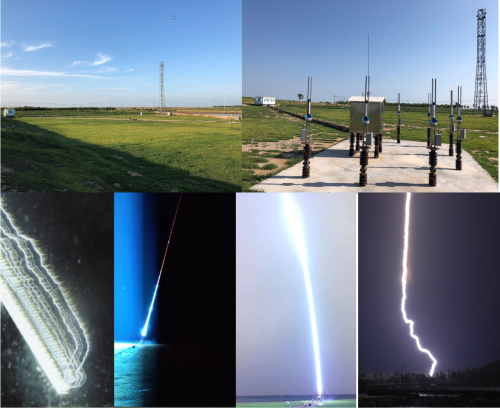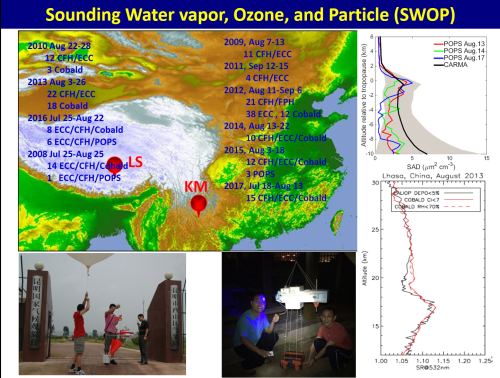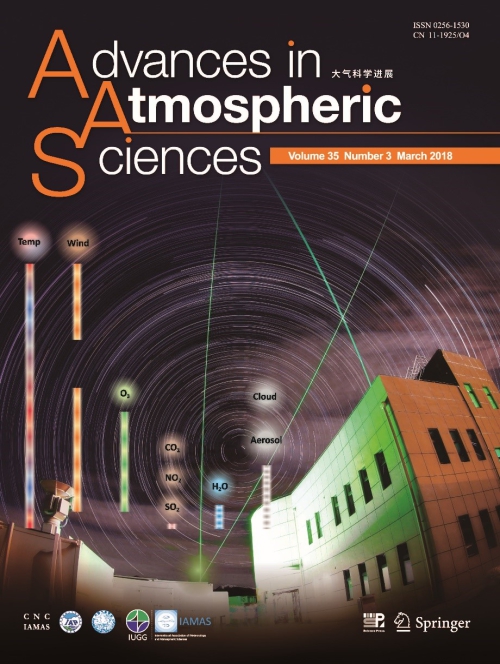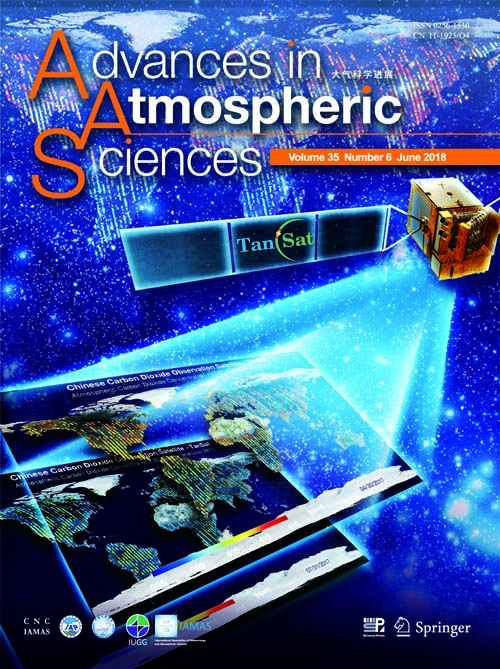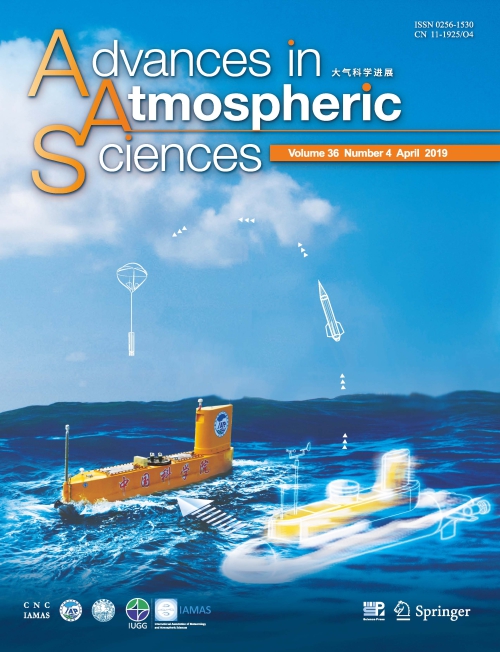Laboratory for Middle Atmosphere and Global Environment Observation (LAGEO) focuses on fundamental research and related applications. Devoted to developing detection techniques, performing field observations and lab experiments, and combining theoretical analysis and model simulations, LAGEO aims to train outstanding talents, to build excellent research groups, and to lead the way in the field of atmospheric physics in China, particularly on the subject of middle atmosphere and global environment observation. According to the research frontiers in this field and the strategic requirements of China, three research themes have been set up:
(1) Remote sensing of the whole atmosphere, theory and technology. This covers atmospheric remote sensing theory and retrieval algorithm development, retrieval production validation and application, and atmospheric detection technology and instrument development.
(2) Multi-scale physical and chemical processes, as well as the interaction between the upper and lower atmosphere. Specific topics include atmospheric species exchange and dynamical coupling between the troposphere and stratosphere, aerosol-cloud-radiation interaction, and multi-scale physical and chemical processes.
(3) The physics of lightning and thunderstorms and their impact on the middle atmosphere. This includes the physical mechanisms and effects of lightning, the physical relationship between lightning and the dynamic-microphysical-electrical processes in strong convective systems, and the impact of thunderstorms and lightning on the middle atmosphere.
Some representative innovative achievements during the past five years include:
(1) Remote sensing of the whole atmosphere, theory and technology:
· Development of a “full-physical”-based CO2 retrieval algorithm for TanSat. The retrieval algorithm is based on an optimal estimation technique, and made the first version of the global CO2 map of China’s TanSat mission. Validation against TCCON shows an accuracy of 2.11 ppm, globally.
· The Atmospheric Profiling Synthetic Observation System (or APSOS) in Tibet is the world’s first ground-based facility for profiling atmospheric variables (temperature, wind) and multiple constituents (O3, CO2, aerosol, cloud) from the ground to 110 km in the neutral atmosphere.
· Joint development of the panoramic limb view (multi-azimuth)/multi-band earth limb ultraviolet imager launched into orbit onboard TianGong-2. This instrument can continuously monitor the vertical distribution of O3, NO2, SO2, aerosol, and background radiation. The innovative panoramic limb viewing technique has improved the data acquisition rate by two orders of magnitude compared with the traditional limb satellite.
(2) Multi-scale physical and chemical processes, as well as the interaction between the upper and lower atmosphere:
· Sounding of water vapor, O3 and particles (referred to as ‘SWOP’) has been conducted for 10 consecutive summers over the Tibetan Plateau. For the first time, the observations have confirmed the existence of the Asian tropopause aerosol layer (ATAL) and elucidated the aerosol size spectrum via in-situ measurements. The contribution of ATAL aerosols dispersed in the stratosphere to stratospheric aerosols in the Northern Hemisphere has been quantitatively estimated, revealing it to be comparable to the total contribution from all volcanic eruptions during the same period.
· It has been found that the pathway along which aerosols from high-latitude volcanic eruptions are transported into the tropical stratosphere takes place via the Asian summer monsoon anticyclone and subsequent modification of the global stratospheric aerosol budget. Further, a shortcut has been identified through which aerosols from tropical volcanic eruptions enter the Antarctic stratosphere via the shallow branch of the Brewer–Dobson circulation.
· Updates to our understanding of the diurnal, weekly, seasonal and interdecadal variations of aerosol optical depth in China, along with some important results on the evolutionary pattern and transport mechanisms of aerosol optical depth and particle size distribution during severe haze periods in winter in the North China Plain region. A case study was performed on how aerosols from biomass burning in South Asia influenced the southwestern region in China via transport.
(3) The physics of lightning and thunderstorms and their impacts on the middle atmosphere.
· Establishment of the Beijing Lightning Network (or BLNET), operated in multiple bands, which has realized the three-dimensional real-time location of lightning radiation pulses; the development of a lightning microwave radiation detection system and lightning optical transient ultra-speed detection system; and achieving comprehensive and synchronous observations of rocket-triggered lightning at close range by means of wide bands and multiple parameters.
· Finely resolved optical images of the intermittent propagation of the positive leader step, revealing the step formation of the positive leader with stages of “charge accumulation”, “hop forward”, and “pause and dim”, which is distinct from the negative step formation with the evolution of the “space stem/leader” ahead of the leader tip. Also, clarification of different channel branching scenarios and mechanisms in positive and negative leaders.
· The first observation of a gigantic jet in the mid-latitude area, providing clear evidence for the hypothesis of gigantic jet generation above thunderstorms with asymmetric charge structure; new insights into the characteristics of lightning inducing rare negative red sprites, as well as the differences in the associated thunderstorms in continental and oceanic areas; and a new mechanism of red sprite excitation via a charge transfer process of lightning continuing current.
The laboratory has carried out extensive academic exchanges and scientific research cooperation efforts with the United States, France, Germany, Switzerland, Russia, Belgium, Japan, the United Kingdom, Canada, and Norway.
Director: BIAN Jianchun
Website: http://lageo.iap.ac.cn/
